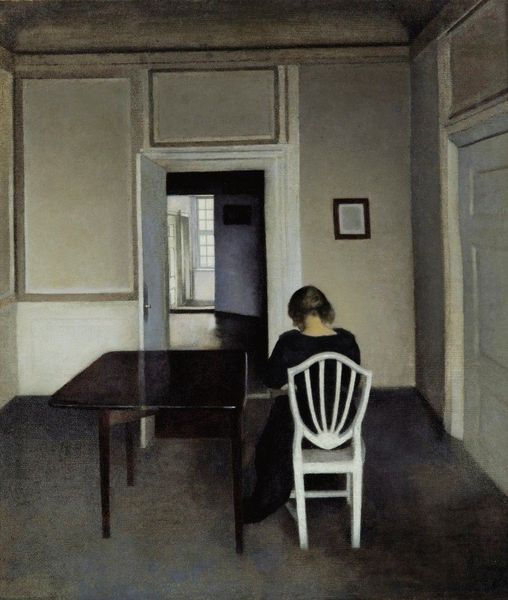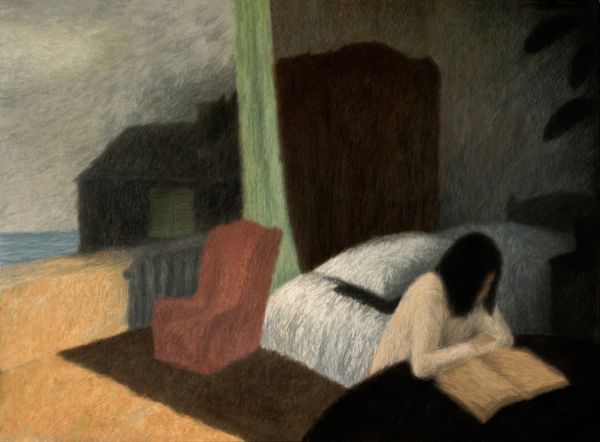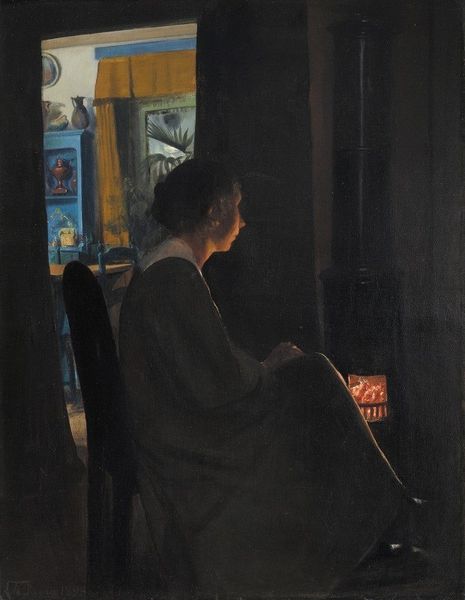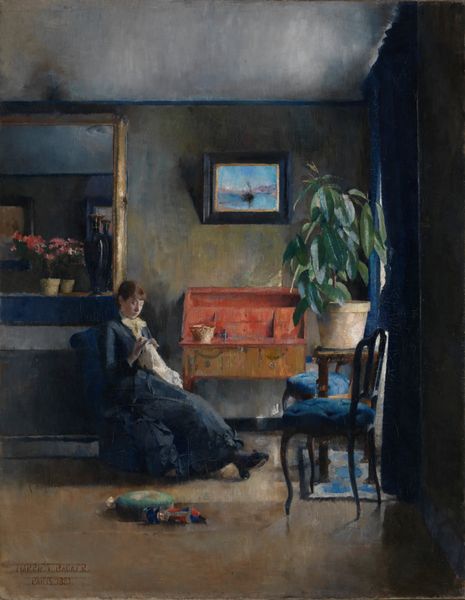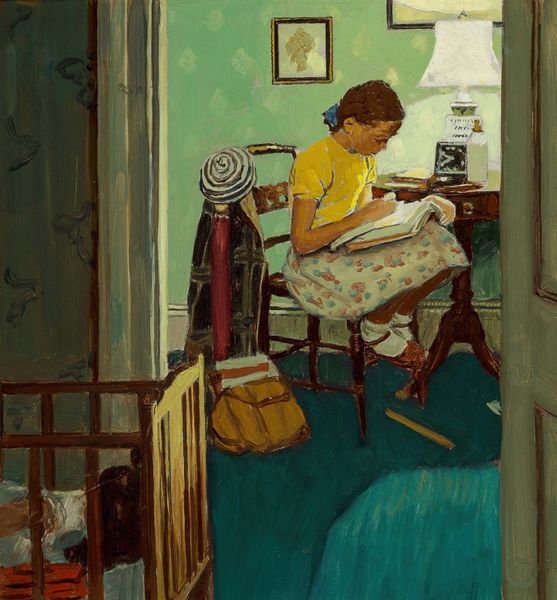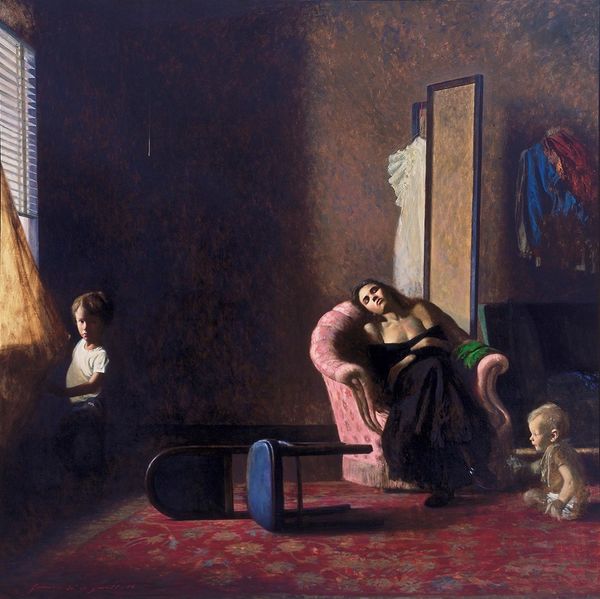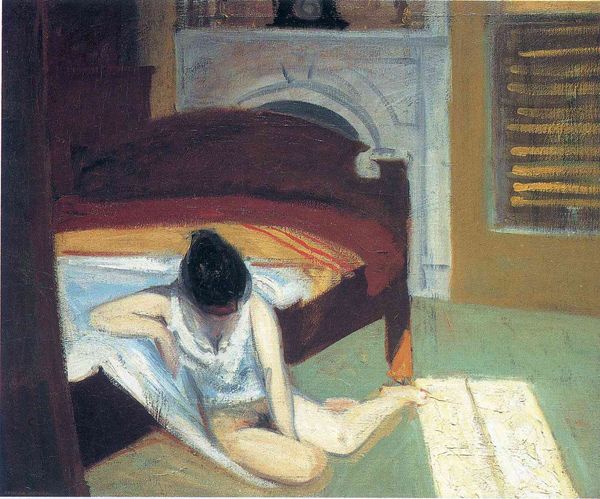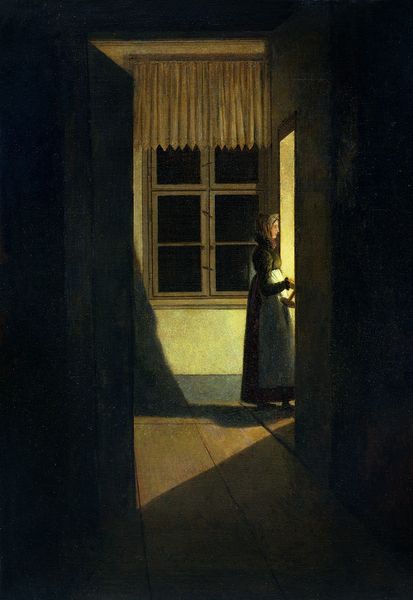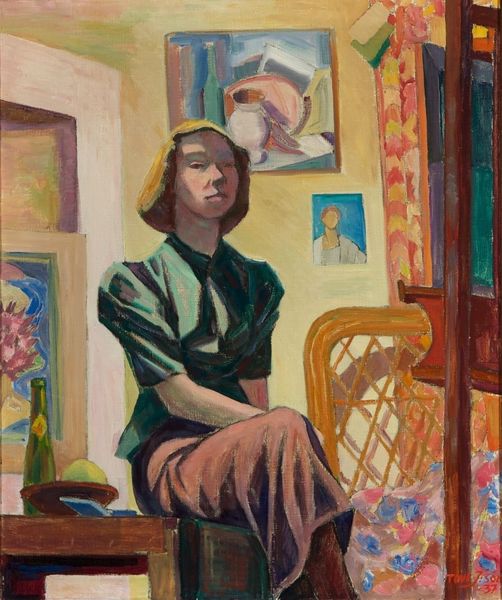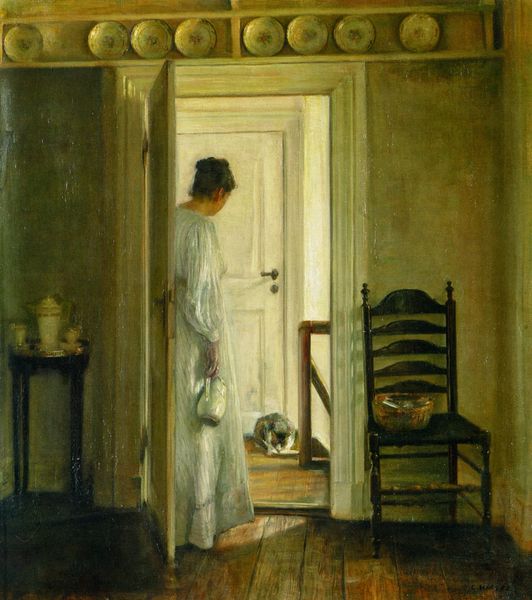
painting, oil-paint
#
portrait
#
painting
#
oil-paint
#
oil painting
#
female-nude
#
ashcan-school
#
genre-painting
#
nude
#
modernism
#
realism
Copyright: Edward Hopper,Fair Use
Editor: This is Edward Hopper’s "Eleven A.M." painted in 1926, using oil paint. There's this palpable stillness about the figure, the way she's positioned… almost waiting. What draws your eye when you look at this painting? Curator: My attention immediately goes to the light, doesn’t it? Not just the way it illuminates the subject, but its source. What are the material conditions allowing for that light? This isn’t a pre-industrial setting; the window reveals other buildings. Look at the uniformity. It implies mass production of both space and materials. How does the woman's nudity play into our consumption of this manufactured world? Is it another commodity? Editor: That's a really interesting way to look at it! I was so focused on the figure's emotional state. But, when you mention the setting... those buildings *do* seem cold and imposing. So, are you suggesting Hopper is making a statement about the industrial world's impact on intimacy or even freedom? Curator: I’m suggesting that the *materials* – the paint itself, the canvas stretched taut, the architectural environment implied – speak to the complex social dynamics at play. Hopper meticulously depicts a space defined by manufacture and repetition. Where, then, does the individual, and particularly the laboring class woman, fit into this picture of relentless construction and productivity? Editor: So, we're not just looking at a nude in a room, but at how the materials around her tell a story about work and modern life in the 1920s. It definitely gives me a lot to consider! Curator: Exactly! Consider the painting as less of a 'window' into an emotional state, and more a 'mirror' reflecting the material circumstances of its creation and the society it represents. The social position of its subject reflected in light and texture of the very buildings behind her. Editor: That makes the painting far more profound and disturbing! Thank you, this approach offers such fresh insights.
Comments
No comments
Be the first to comment and join the conversation on the ultimate creative platform.
